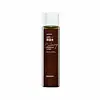What's inside
What's inside
 Key Ingredients
Key Ingredients

 Benefits
Benefits

 Concerns
Concerns

No concerns
 Ingredients Side-by-side
Ingredients Side-by-side

Water
Skin ConditioningButylene Glycol
HumectantNiacinamide
SmoothingSqualane
EmollientTranexamic Acid
AstringentMethyl Trimethicone
Skin ConditioningPentylene Glycol
Skin ConditioningGlycerin
HumectantHydrogenated Ethylhexyl Olivate
EmollientChondrus Crispus Extract
Skin ConditioningHydrogenated Olive Oil Unsaponifiables
EmollientSaccharum Officinarum Extract
MoisturisingSodium Hyaluronate
HumectantPaeonia Suffruticosa Root Extract
Skin ProtectingBetaine
HumectantPanthenol
Skin ConditioningDimethyl Isosorbide
SolventBisabolol
MaskingPropanediol
SolventTocopheryl Acetate
Antioxidant4-T-Butylcyclohexanol
MaskingHydroxyethyl Acrylate/Sodium Acryloyldimethyl Taurate Copolymer
Emulsion StabilisingGlyceryl Stearate
EmollientPEG-100 Stearate
C12-20 Alkyl Glucoside
Emulsifying1,2-Hexanediol
Skin ConditioningHydroxypinacolone Retinoate
Skin ConditioningTromethamine
BufferingEthylhexylglycerin
Skin ConditioningAdenosine
Skin ConditioningPalmitic Acid
EmollientStearic Acid
CleansingSorbitan Isostearate
EmulsifyingBeta-Glucan
Skin ConditioningTocopherol
AntioxidantC14-22 Alcohols
Emulsion StabilisingCarbomer
Emulsion StabilisingXanthan Gum
EmulsifyingWater, Butylene Glycol, Niacinamide, Squalane, Tranexamic Acid, Methyl Trimethicone, Pentylene Glycol, Glycerin, Hydrogenated Ethylhexyl Olivate, Chondrus Crispus Extract, Hydrogenated Olive Oil Unsaponifiables, Saccharum Officinarum Extract, Sodium Hyaluronate, Paeonia Suffruticosa Root Extract, Betaine, Panthenol, Dimethyl Isosorbide, Bisabolol, Propanediol, Tocopheryl Acetate, 4-T-Butylcyclohexanol, Hydroxyethyl Acrylate/Sodium Acryloyldimethyl Taurate Copolymer, Glyceryl Stearate, PEG-100 Stearate, C12-20 Alkyl Glucoside, 1,2-Hexanediol, Hydroxypinacolone Retinoate, Tromethamine, Ethylhexylglycerin, Adenosine, Palmitic Acid, Stearic Acid, Sorbitan Isostearate, Beta-Glucan, Tocopherol, C14-22 Alcohols, Carbomer, Xanthan Gum
Ingredients Explained
These ingredients are found in both products.
Ingredients higher up in an ingredient list are typically present in a larger amount.
1,2-Hexanediol is a synthetic liquid and another multi-functional powerhouse.
It is a:
- Humectant, drawing moisture into the skin
- Emollient, helping to soften skin
- Solvent, dispersing and stabilizing formulas
- Preservative booster, enhancing the antimicrobial activity of other preservatives
Butylene Glycol (or BG) is used within cosmetic products for a few different reasons:
Overall, Butylene Glycol is a safe and well-rounded ingredient that works well with other ingredients.
Though this ingredient works well with most skin types, some people with sensitive skin may experience a reaction such as allergic rashes, closed comedones, or itchiness.
Learn more about Butylene GlycolCarbomer is a polymer of acrylic acid. Its main role is to create a gel consistency.
A high amount of carbomer can cause pilling or balling up of products. Don't worry, most products contain 1% or less of carbomer.
Niacinamide is a multitasking form of vitamin B3 that strengthens the skin barrier, reduces pores and dark spots, regulates oil, and improves signs of aging.
And the best part? It's gentle and well-tolerated by most skin types, including sensitive and reactive skin.
You might have heard of "niacin flush", or the reddening of skin that causes itchiness. Niacinamide has not been found to cause this.
In very rare cases, some individuals may not be able to tolerate niacinamide at all or experience an allergic reaction to it.
If you are experiencing flaking, irritation, and dryness with this ingredient, be sure to double check all your products as this ingredient can be found in all categories of skincare.
When incorporating niacinamide into your routine, look out for concentration amounts. Typically, 5% niacinamide provides benefits such as fading dark spots. However, if you have sensitive skin, it is better to begin with a smaller concentration.
When you apply niacinamide to your skin, your body converts it into nicotinamide adenine dinucleotide (NAD). NAD is an essential coenzyme that is already found in your cells as "fuel" and powers countless biological processes.
In your skin, NAD helps repair cell damage, produce new healthy cells, support collagen production, strengthen the skin barrier, and fight environmental stressors (like UV and pollution).
Our natural NAD levels start to decline with age, leading to slower skin repair, visible aging, and a weaker skin barrier. By providing your skin niacinamide, you're recharging your skin's NAD levels. This leads to stronger, healthier, and younger looking skin.
Another name for vitamin B3 is nicotinamide. This vitamin is water-soluble and our bodies don't store it. We obtain Vitamin B3 from either food or skincare. Meat, fish, wheat, yeast, and leafy greens contain vitamin B3.
The type of niacinamide used in skincare is synthetically created.
Learn more about NiacinamideTromethamine helps balance the pH and improve the texture of a product. It is synthetically created.
As an emulsifier, Tromethamine prevents oil and water ingredients from separating. This helps stabilize the product and elongate a product's shelf life. Tromethamine also makes a product thicker.
Tromethamine helps balance the pH level of a product. Normal pH level of skin is slightly acidic (~4.75-5.5). The acidity of our skin is maintained by our glands and skin biome. Being slightly acidic allows our skin to create an "acid mantle". This acid mantle is a thin barrier that protects our skin from bacteria and contaminants.
Oral Tromethanmine is an anti-inflammatory drug but plays the role of masking, adding fragrance, and/or balancing pH in skincare.
1,3-Propanediol, 2-amino-2-(hydroxymethyl)-
Learn more about Tromethamine